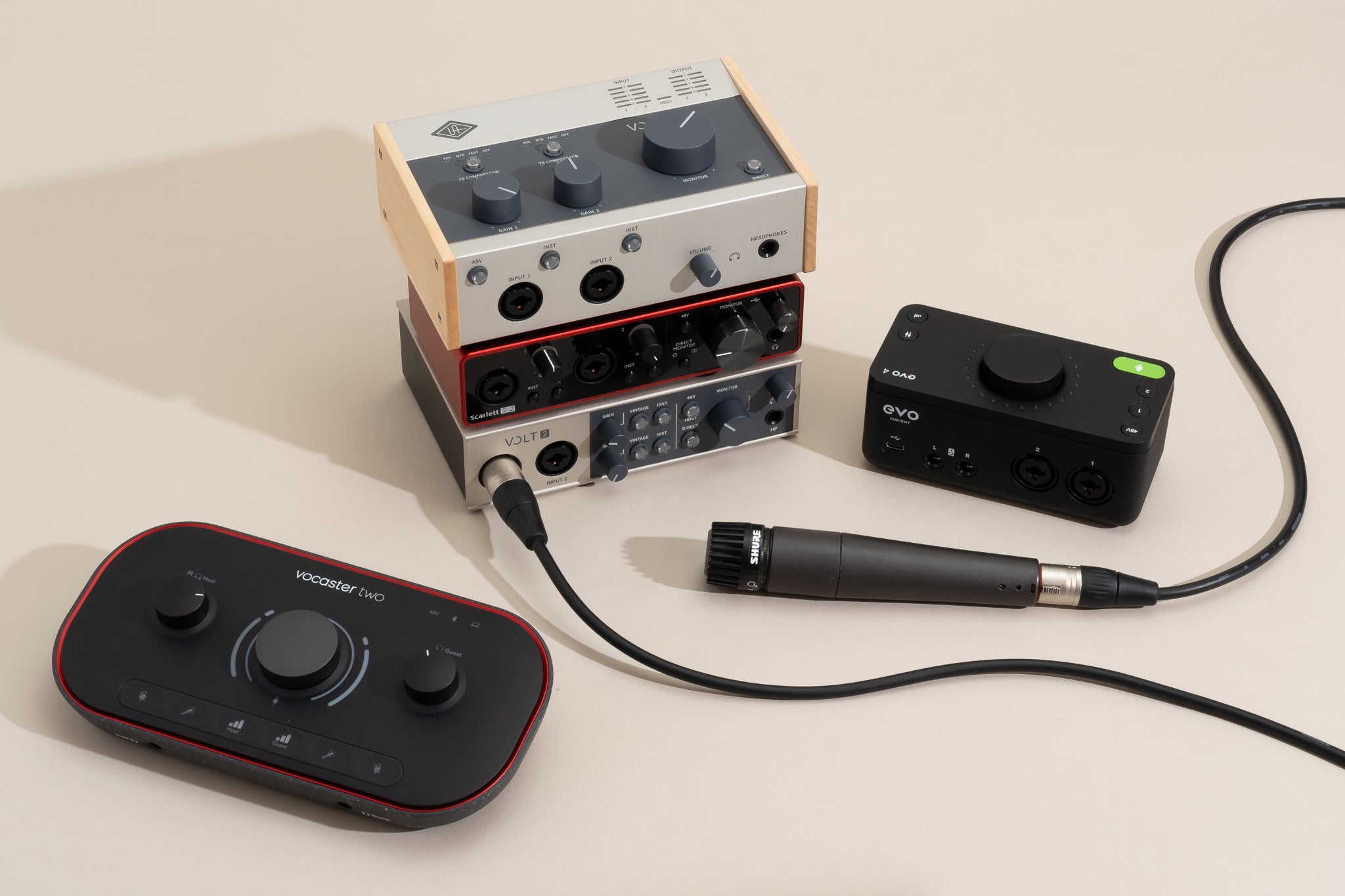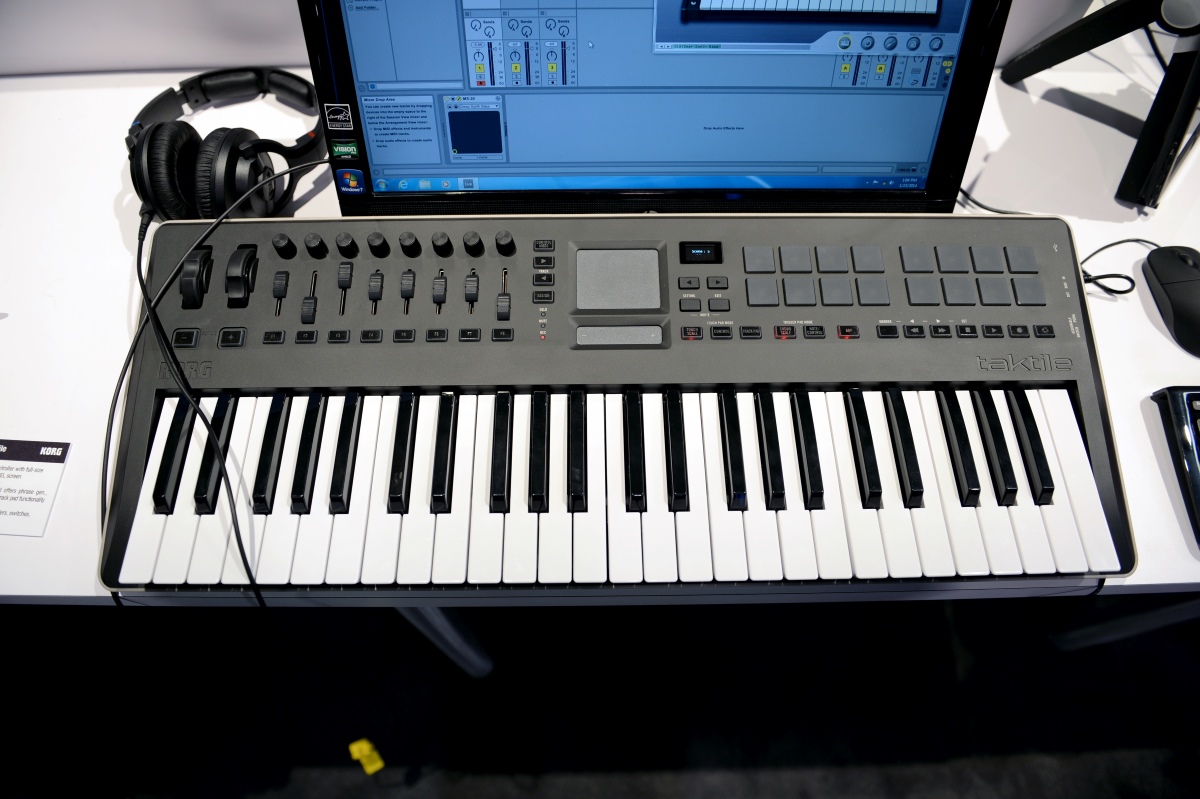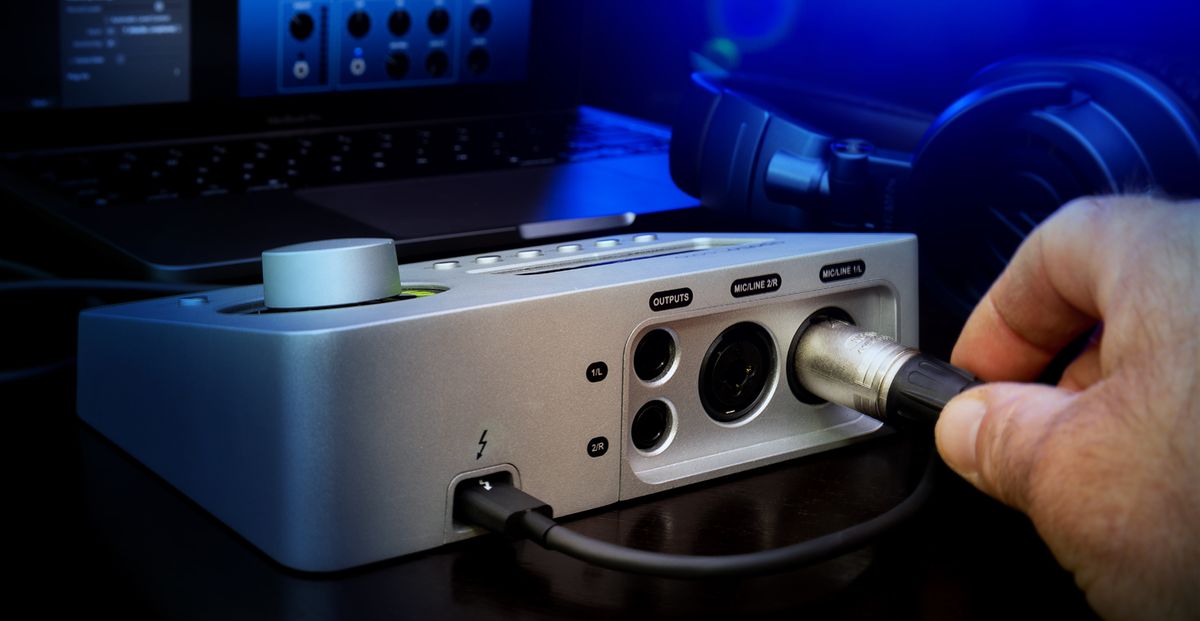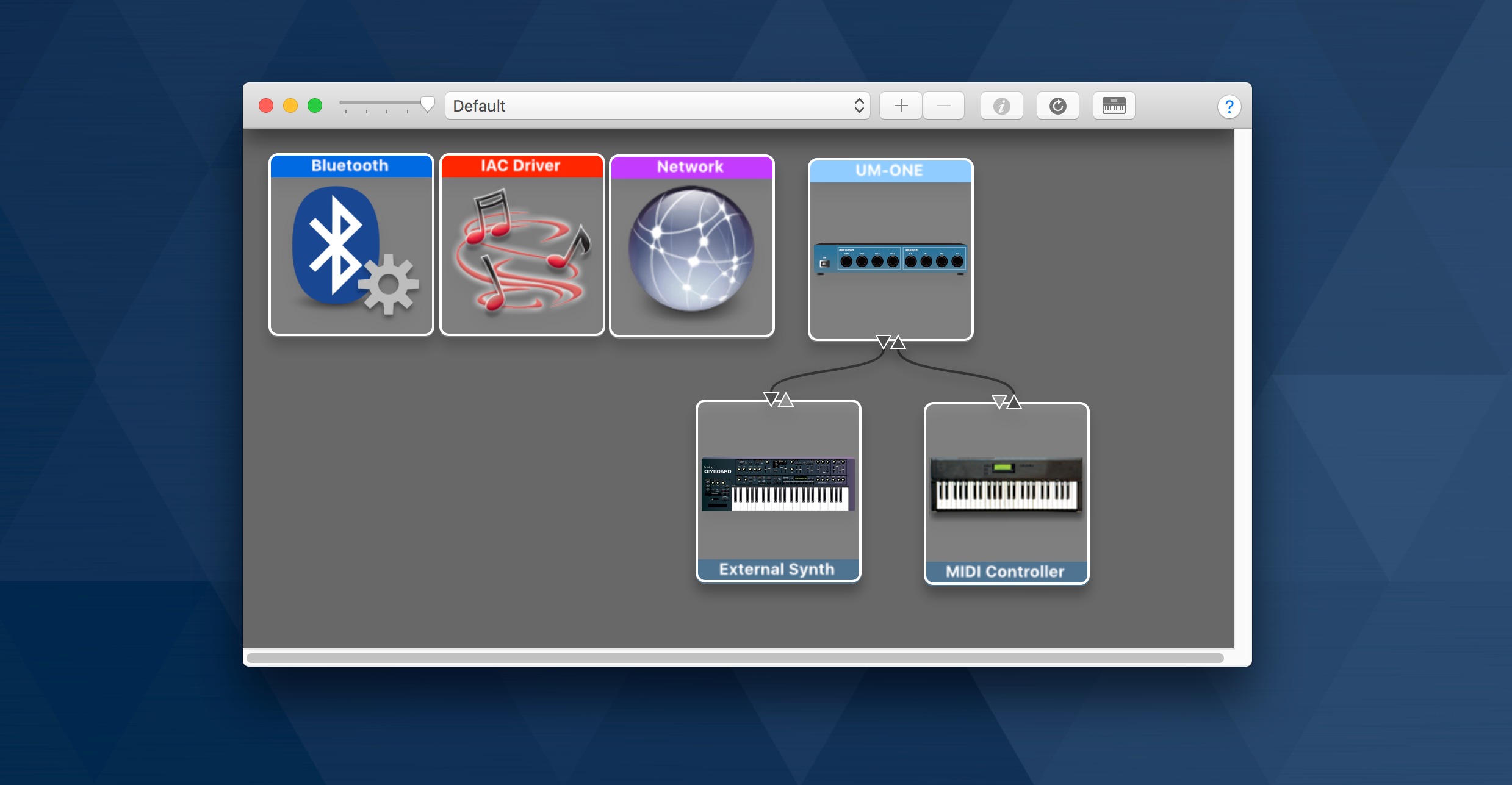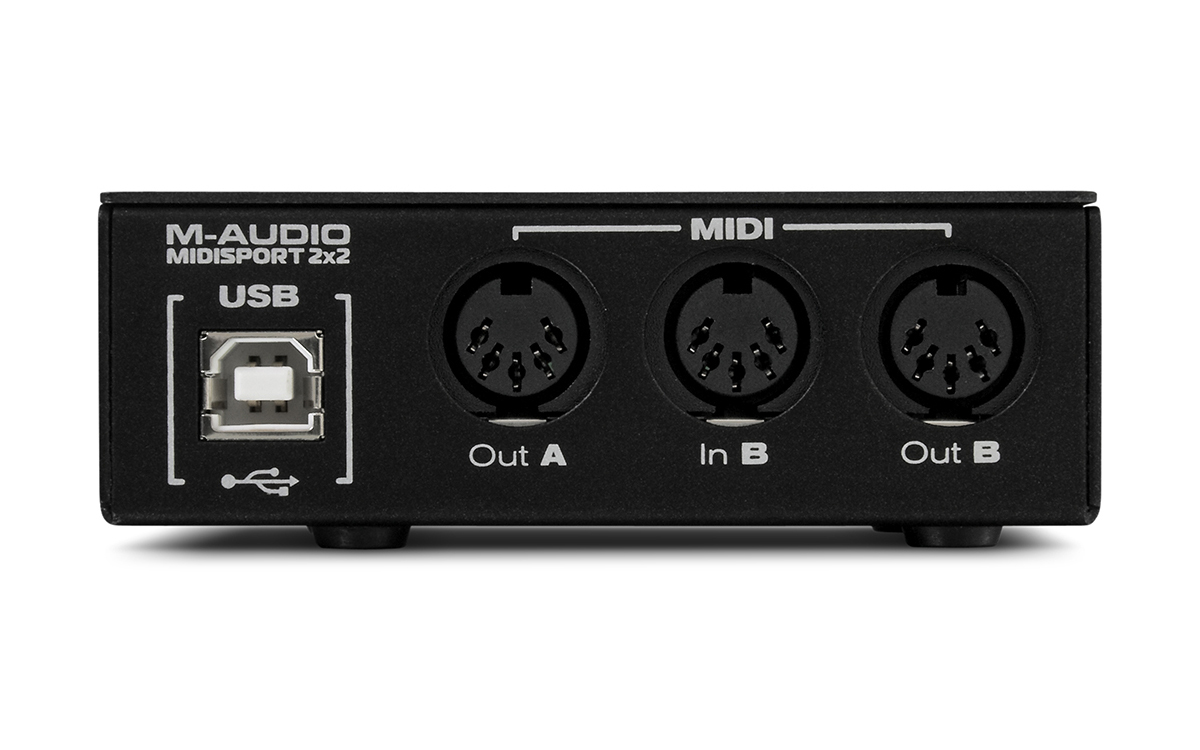Home>Production & Technology>MIDI>How To Turn Audio To MIDI
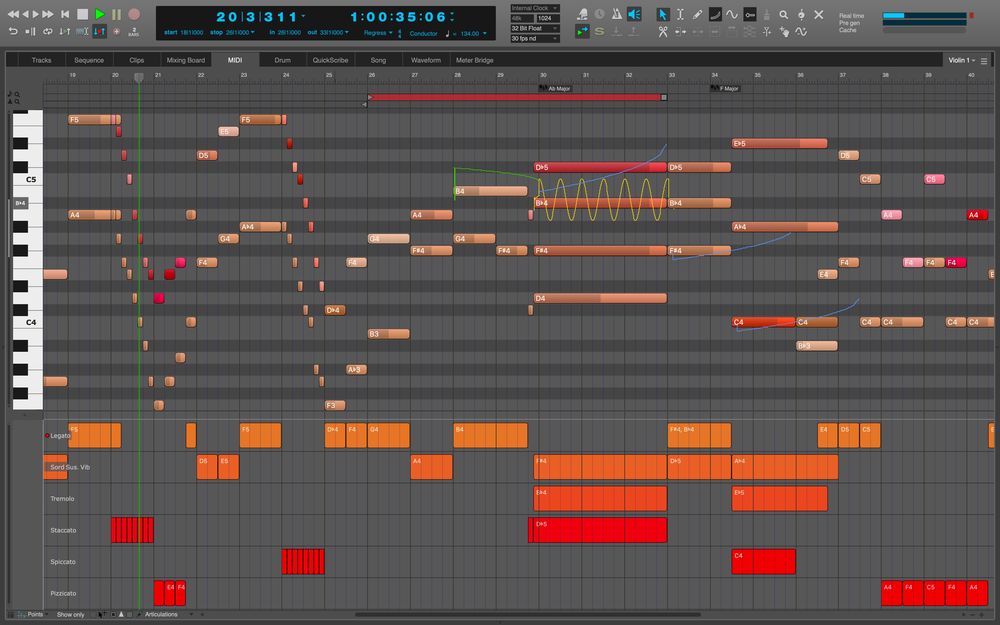

MIDI
How To Turn Audio To MIDI
Published: February 20, 2024
Learn how to convert audio to MIDI with our step-by-step guide. Easily transform your music files into MIDI format and unleash endless creative possibilities.
(Many of the links in this article redirect to a specific reviewed product. Your purchase of these products through affiliate links helps to generate commission for AudioLover.com, at no extra cost. Learn more)
Table of Contents
Introduction
In today's music production landscape, the ability to convert audio to MIDI has revolutionized the way musicians and producers approach their craft. This transformative process opens up a world of possibilities, allowing for seamless integration of recorded audio with the flexibility and versatility of MIDI data. Whether you're a seasoned musician, a budding producer, or a curious enthusiast, understanding the intricacies of audio to MIDI conversion is a valuable asset in your creative arsenal.
The concept of turning audio to MIDI may seem like magic to the uninitiated, but at its core, it's a sophisticated technology that analyzes the pitch, timing, and dynamics of audio signals and translates them into MIDI data. This means that a melody sung into a microphone, a guitar riff plucked on a string, or a drum pattern tapped out on a surface can all be transformed into MIDI notes, ready to be manipulated, edited, and enhanced in a digital environment.
The implications of this process are profound. It empowers musicians to capture moments of inspiration without being bound by the limitations of traditional recording methods. It allows for the extraction of musical ideas from existing recordings, opening the door to reinterpretation, remixing, and creative exploration. Furthermore, it facilitates the integration of live performances into digital compositions, bridging the gap between the organic and the electronic.
As we delve into the intricacies of audio to MIDI conversion, we'll explore the tools and techniques that make this transformation possible. From selecting the right software to the nuances of refining MIDI data, we'll navigate the landscape of this innovative process. By the end of this journey, you'll have a comprehensive understanding of how to harness the power of audio to MIDI conversion, unlocking a world of creative potential in the realm of music production.
Understanding Audio to MIDI Conversion
Audio to MIDI conversion is a transformative process that holds immense significance in the realm of music production. At its core, this technology enables the translation of audio signals into MIDI data, allowing for a seamless integration of recorded audio with the flexibility and versatility of MIDI. Understanding the intricacies of this conversion process is crucial for musicians and producers seeking to expand their creative horizons.
The fundamental concept behind audio to MIDI conversion revolves around the analysis and interpretation of audio signals. This involves dissecting the pitch, timing, and dynamics of the audio input to extract musical information. Through advanced algorithms and signal processing techniques, the software identifies and maps these sonic elements to corresponding MIDI data, effectively translating the audio performance into a digital format.
One of the key aspects of audio to MIDI conversion is pitch detection. This involves identifying the fundamental frequency of the audio signal, which corresponds to the pitch of the musical notes being played or sung. By accurately detecting and transcribing these pitch values into MIDI note data, the conversion process lays the foundation for capturing the melodic essence of the audio input.
Furthermore, timing and rhythmic analysis play a pivotal role in the conversion process. The software meticulously analyzes the temporal characteristics of the audio performance, identifying note onsets, durations, and rhythmic patterns. This information is then translated into MIDI note events, effectively capturing the rhythmic nuances of the original audio recording.
Additionally, dynamics and articulation are essential considerations in audio to MIDI conversion. The software endeavors to capture the expressive elements of the performance, including variations in volume, velocity, and articulation. By preserving these dynamic nuances in the MIDI data, the conversion process aims to retain the emotive qualities of the original audio performance.
It's important to note that while audio to MIDI conversion technology has made significant advancements, it is not without its limitations. Complex audio signals, such as dense mixtures of instruments or intricate polyphonic performances, can pose challenges for accurate conversion. However, with continuous innovation and refinement, modern software solutions have made substantial strides in addressing these complexities, offering increasingly reliable and precise conversion capabilities.
In essence, understanding audio to MIDI conversion entails grasping the intricate process of translating audio signals into MIDI data. By delving into the nuances of pitch, timing, dynamics, and the inherent challenges of the conversion process, musicians and producers can gain a deeper appreciation for the transformative potential of this technology.
This understanding serves as a cornerstone for exploring the diverse applications of audio to MIDI conversion, empowering creative individuals to harness its capabilities and unlock new realms of musical expression and production.
Choosing the Right Software
Selecting the appropriate software for audio to MIDI conversion is a critical decision that significantly influences the quality and efficiency of the conversion process. As the market offers a plethora of options, each equipped with unique features and capabilities, it's essential to consider various factors when choosing the right software for this transformative task.
First and foremost, compatibility and integration are paramount considerations. The chosen software should seamlessly integrate into your existing digital audio workstation (DAW) or music production environment. This ensures a smooth workflow, allowing for effortless transfer of audio recordings to MIDI data without encountering compatibility issues or cumbersome file conversions.
Moreover, the software's accuracy and precision in converting audio to MIDI are pivotal factors. Look for solutions that employ advanced algorithms and signal processing techniques to accurately detect pitch, timing, and dynamics from audio signals. Reliable pitch detection, rhythmic analysis, and dynamic articulation are essential features that contribute to the fidelity and authenticity of the converted MIDI data.
Furthermore, flexibility and customization options play a crucial role in the software selection process. Opt for software that offers comprehensive editing tools, allowing for fine-tuning and manipulation of the generated MIDI data. Features such as note quantization, velocity adjustments, and pitch correction capabilities empower users to tailor the MIDI output to their specific musical requirements, enhancing the overall creative control and expression.
In addition to functionality, user interface and ease of use are significant considerations. The software should provide an intuitive and user-friendly interface, facilitating a seamless user experience. Clear navigation, visual feedback, and efficient workflow integration contribute to a productive and enjoyable audio to MIDI conversion process.
It's also beneficial to explore software solutions that offer additional functionalities beyond basic audio to MIDI conversion. Some software packages may include comprehensive music production tools, virtual instruments, and MIDI manipulation capabilities, expanding the utility of the software beyond the core conversion process.
Lastly, user feedback, reviews, and demonstrations can offer valuable insights into the performance and capabilities of the software. Engage with the music production community, seek recommendations from fellow musicians and producers, and explore demonstrations and tutorials to gain a comprehensive understanding of the software's potential and limitations.
By considering these factors and conducting thorough research, you can make an informed decision when choosing the right software for audio to MIDI conversion. A well-suited software solution not only streamlines the conversion process but also empowers you to explore new creative avenues and elevate your music production endeavors.
Converting Audio to MIDI
Converting audio to MIDI marks the pivotal stage where the sonic essence of recorded audio is transmuted into a digital format, laying the foundation for creative exploration and manipulation. This transformative process holds immense significance in the realm of music production, offering a gateway to harness the expressive potential of audio recordings within the versatile domain of MIDI data.
The process of converting audio to MIDI typically begins by importing the desired audio file into the designated software or digital audio workstation (DAW) equipped with audio to MIDI conversion capabilities. Once the audio material is loaded, the software employs advanced algorithms and signal processing techniques to analyze the pitch, timing, and dynamics of the audio signals, extracting musical information essential for MIDI translation.
Pitch detection serves as a fundamental aspect of the conversion process, as the software endeavors to accurately identify the pitch values of the audio signals. By discerning the fundamental frequencies corresponding to the musical notes within the audio recording, the software translates this pitch information into MIDI note data, effectively capturing the melodic essence of the original performance.
Rhythmic analysis is another critical dimension of the conversion process. The software meticulously dissects the temporal characteristics of the audio performance, identifying note onsets, durations, and rhythmic patterns. Through this analysis, the software generates MIDI note events, encapsulating the rhythmic nuances and temporal intricacies of the original audio recording within the MIDI domain.
Furthermore, dynamics and articulation are integral considerations in the conversion process. The software endeavors to capture the expressive elements of the performance, including variations in volume, velocity, and articulation. By preserving these dynamic nuances in the MIDI data, the conversion process aims to retain the emotive qualities and nuanced expressions of the original audio performance, ensuring a faithful representation within the digital realm.
Upon completion of the conversion process, the software presents the user with MIDI data that mirrors the musical attributes of the original audio recording. This MIDI representation enables users to manipulate, edit, and augment the converted data, opening the door to creative possibilities such as harmonization, orchestration, and arrangement within the digital environment.
In essence, the process of converting audio to MIDI serves as a transformative bridge between the sonic authenticity of recorded audio and the boundless potential of MIDI data. This pivotal conversion process empowers musicians and producers to seamlessly integrate live performances, vocal recordings, and instrumental improvisations into the digital realm, fostering a dynamic and expressive landscape for musical exploration and production.
Editing and Fine-Tuning MIDI Data
Once the audio has been successfully converted to MIDI, the stage is set for in-depth editing and fine-tuning of the MIDI data. This critical phase empowers musicians and producers to sculpt and refine the converted MIDI representation, shaping it to align with their creative vision and musical objectives.
The editing process begins with a comprehensive review of the converted MIDI data. This involves scrutinizing the note events, velocity values, and timing accuracy to ensure that the MIDI representation faithfully captures the essence of the original audio performance. Additionally, users have the opportunity to address any potential discrepancies or inaccuracies that may have arisen during the conversion process.
One of the fundamental aspects of editing MIDI data is note quantization. This feature enables users to align MIDI notes to a specified grid, enhancing the rhythmic precision and consistency of the performance. By quantizing the MIDI data, musicians can refine the timing of individual notes, ensuring a polished and cohesive musical output.
Velocity adjustments play a pivotal role in shaping the dynamic expression of the MIDI data. Users have the flexibility to modify the velocity values of individual notes, thereby controlling the intensity and articulation of the performance. This level of fine-tuned control over velocity empowers musicians to imbue the MIDI representation with nuanced dynamics, enhancing the emotive impact of the musical output.
Furthermore, pitch correction capabilities offer a valuable tool for refining the pitch accuracy of the MIDI data. This feature enables users to address any pitch discrepancies that may have arisen during the conversion process, ensuring that the MIDI representation aligns closely with the intended musical content. By rectifying pitch inaccuracies, musicians can elevate the fidelity and authenticity of the MIDI output.
In addition to these fundamental editing tools, advanced software solutions offer a myriad of creative possibilities for manipulating MIDI data. Users can explore features such as MIDI CC (Continuous Controller) assignments, polyphonic aftertouch, and expressive articulation control, expanding the scope of creative expression within the MIDI domain.
Moreover, the integration of virtual instruments and MIDI manipulation tools within the software environment further enhances the potential for creative exploration. This allows users to augment the converted MIDI data with virtual instrument sounds, apply intricate MIDI processing effects, and craft elaborate musical arrangements within a unified digital workspace.
In essence, the process of editing and fine-tuning MIDI data represents a transformative phase where the raw MIDI representation is sculpted into a refined musical output. This stage empowers musicians and producers to exercise precise control over the expressive nuances of the MIDI data, fostering a dynamic and immersive creative journey within the realm of music production.
Conclusion
In conclusion, the process of turning audio to MIDI represents a transformative journey that intertwines technological innovation with creative expression. From the intricate analysis of audio signals to the seamless integration of MIDI data, this transformative process transcends traditional boundaries, offering a gateway to boundless creativity and musical exploration.
The understanding of audio to MIDI conversion delves deep into the nuances of pitch detection, rhythmic analysis, and dynamic articulation, highlighting the intricate process of translating audio signals into MIDI data. This foundational knowledge serves as a springboard for musicians and producers, empowering them to harness the expressive potential of audio recordings within the versatile domain of MIDI.
Choosing the right software for audio to MIDI conversion is a critical decision that significantly influences the quality and efficiency of the conversion process. By considering factors such as compatibility, accuracy, flexibility, and user interface, individuals can make informed decisions, aligning their creative endeavors with software solutions that amplify their potential for musical exploration and production.
The pivotal stage of converting audio to MIDI marks the transformative bridge between the sonic authenticity of recorded audio and the boundless potential of MIDI data. This process empowers musicians to seamlessly integrate live performances, vocal recordings, and instrumental improvisations into the digital realm, fostering a dynamic and expressive landscape for musical exploration and production.
Furthermore, the stage of editing and fine-tuning MIDI data represents a critical phase where musicians and producers sculpt and refine the converted MIDI representation, shaping it to align with their creative vision and musical objectives. This level of fine-tuned control over MIDI data empowers individuals to imbue their musical output with nuanced dynamics, rhythmic precision, and expressive articulation, elevating the fidelity and authenticity of the MIDI representation.
In essence, the journey from audio to MIDI encapsulates a harmonious blend of technology and creativity, offering a transformative pathway for musical innovation and expression. As musicians and producers continue to explore the diverse applications of audio to MIDI conversion, they embark on a dynamic and immersive creative journey, unlocking new realms of musical potential and shaping the future of music production.

